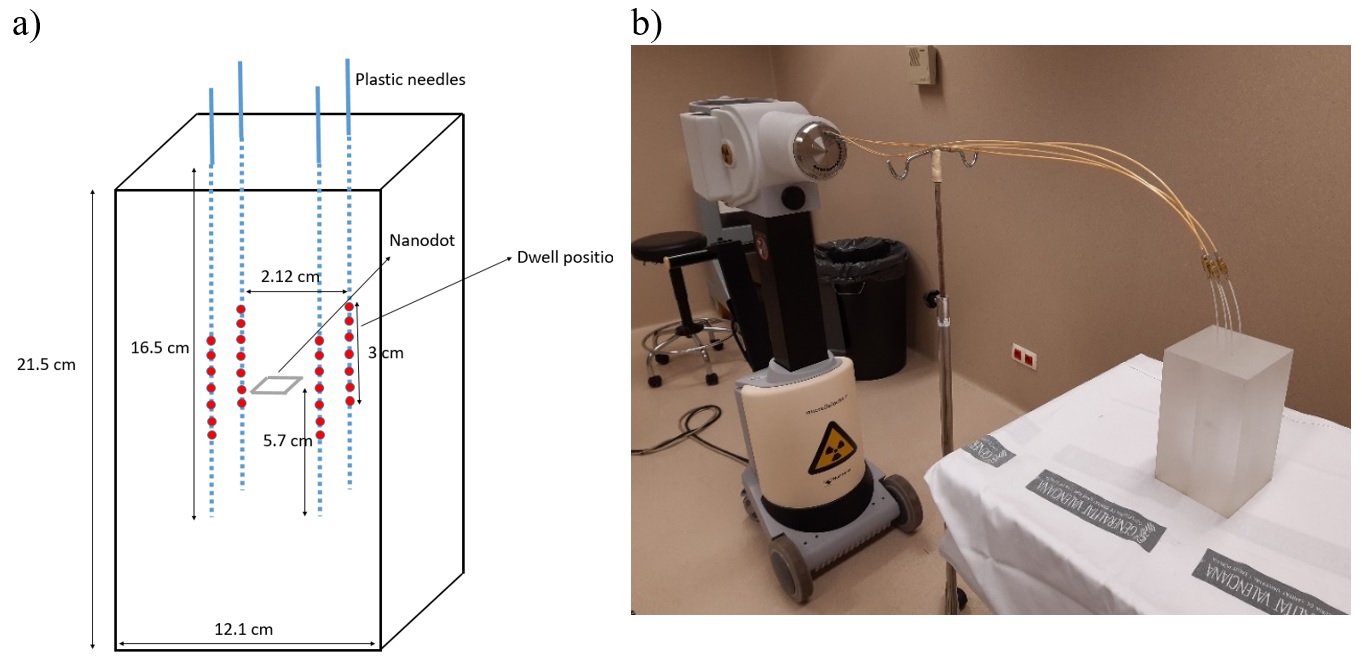Studies performed for the characterization of a mailed dosimetric audit of HDR Brachytherapy
Laura Oliver Cañamás,
Spain
PO-2181
Abstract
Studies performed for the characterization of a mailed dosimetric audit of HDR Brachytherapy
Authors: Laura Oliver Canamas1, Javier Vijande-Asenjo2, Cristian Candela-Juan3, José Gimeno-Olmos4, M. Carmen Pujades-Claumarchirant5, Juan José Rovira-Escutia6, José Ángel Martínez-Navarro7, Antonio Zaragozá-Carrillo7, José Manuel Calatayud-Jordán4, Francisco García-Cases7, Facundo Ballester-Pallarés2, José Pérez-Calatayud8
1Hospital Provincial de Castellón, Radiofísica y Protección Radiológica, Castellón, Spain; 2Universitat de València, Física Atómica, Molecular y Nuclear, Valencia, Spain; 3Centro Nacional de Dosimetría, Unidad Técnica de Protección Radiológica, Valencia, Spain; 4Hospital Universitari i Politècnic La Fe, Radiofísica, Valencia, Spain; 5Centro Nacional de Dosimetría, Dosimetría, Valencia, Spain; 6Centro Nacional de Dosimetría, Laboratorio de Radiaciones Ionizantes, Valencia, Spain; 7Hospital Universitari Sant Joan d'Alacant, Radiofísica y Protección Radiológica, Alicante, Spain; 8Hospital Universitari i Politècnic La Fe/ Clínica Benidorm, Radiofísica / Radiofísica, Valencia / Alicante, Spain
Show Affiliations
Hide Affiliations
Purpose or Objective
A user-friendly solid phantom was designed to perform mailed dosimetric audits in high dose rate (HDR) brachytherapy for systems using either Ir-192 or Co-60. The criteria and part of the studies performed for its design and characterization were presented in previous work. In this work, the calibration factor and the transit dose are measured for both Ir-192 and Co-60. In addition, Monte Carlo (MC) simulations are performed to study differences in the spectrum for different Ir-192 source models and how these can affect the OSL response.
Material and Methods
The phantom consists of a PMMA parallelepiped with a slot designed to hold an OSL nanoDot (Landauer), and four slots to insert the needles (Figure 1).
To stablish the calibration factor, 3 Gy irradiations were performed with an Elekta microselectron V2 for Ir-192, and with a BEBIG Multisource for Co-60.
The effect of the transit dose for this irradiation set-up was characterized for both Ir-192 and Co-60 sources. It was measured by scaling the dwell times and performing a regression analysis of the measured dose as a function of the irradiation time.
MC simulations were performed to study the spectrum of different types of Ir-192 sources. Microselectron V2, Flexisource and Varisource models were simulated with the Penelope/Peneasy software for the different dwell positions. The photon spectra reaching the nanoDot were compared.

Figure1. a) Phantom dimensions. b) Irradiation set-up.
Results
The estimated uncertainty in the dose measurements is 3.1% (k=1), considering the uncertainty due to the dosimeter reading, the RAKR calibration, the dwell position, and the dwell time.
The transit doses obtained were 0.03±0.04 Gy and 0.09±0.04 Gy for Ir-192 and Co-60, respectively.
The results in the MC simulations show differences below 5% between the Microselectron V2 and the Flexisource models in most part of the spectra. However, differences up to 20% are observed between the V2 and the Varisource models in the low energy region (<80 keV). In addition, a dependency with the distance between the dwell position and the nanoDot is observed in the spectra reaching the detector.
Conclusion
The Ir-192 transit dose is compatible with zero whereas the transit dose for Co-60 is not. However, the Multisource system for Co-60 compensates it by reducing the irradiation time of the first and last dwell positions. It was verified that this compensation works correctly. Therefore, it is not necessary to increase the uncertainty in the dose measurement due to this effect.
Differences in the photon spectra from the Microselectron V2 and the Varisource models at the OSL position suggest that the uncertainty in the dose measurement could be increased due to the energy dependence of the nanoDot. Further studies should be performed to quantify the dosimeter response and to determine if it is necessary to use different calibration factors for different source models.
Acknowledgements: This work is supported by the IAEA under the CRP E24023